99% InVisible : A Tiny Radio Show about Design with Roman Mars : Episode 65- Razzle Dazzle
This is probably not what you think of when you think of camouflage.
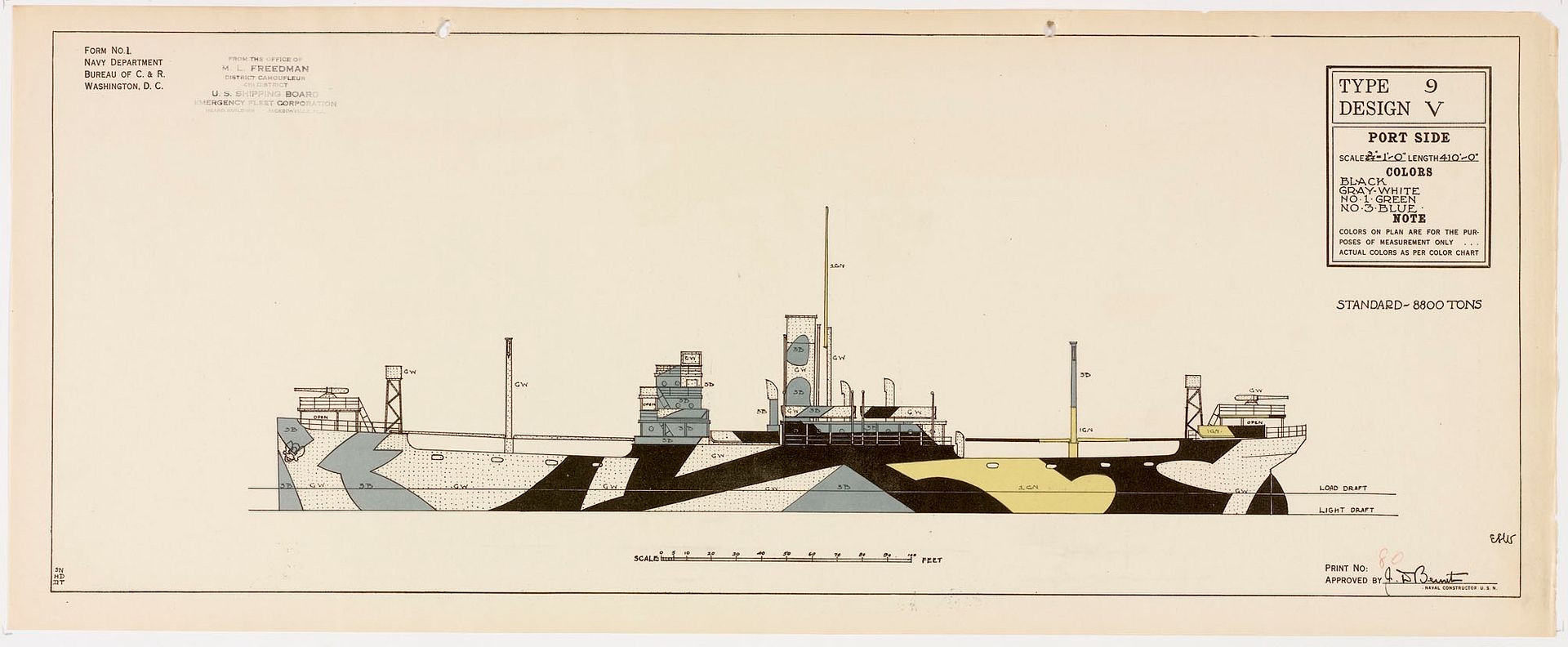 (Erik Gould, courtesy of the Fleet Library at RISD, Providence, RI..)
(Erik Gould, courtesy of the Fleet Library at RISD, Providence, RI..)
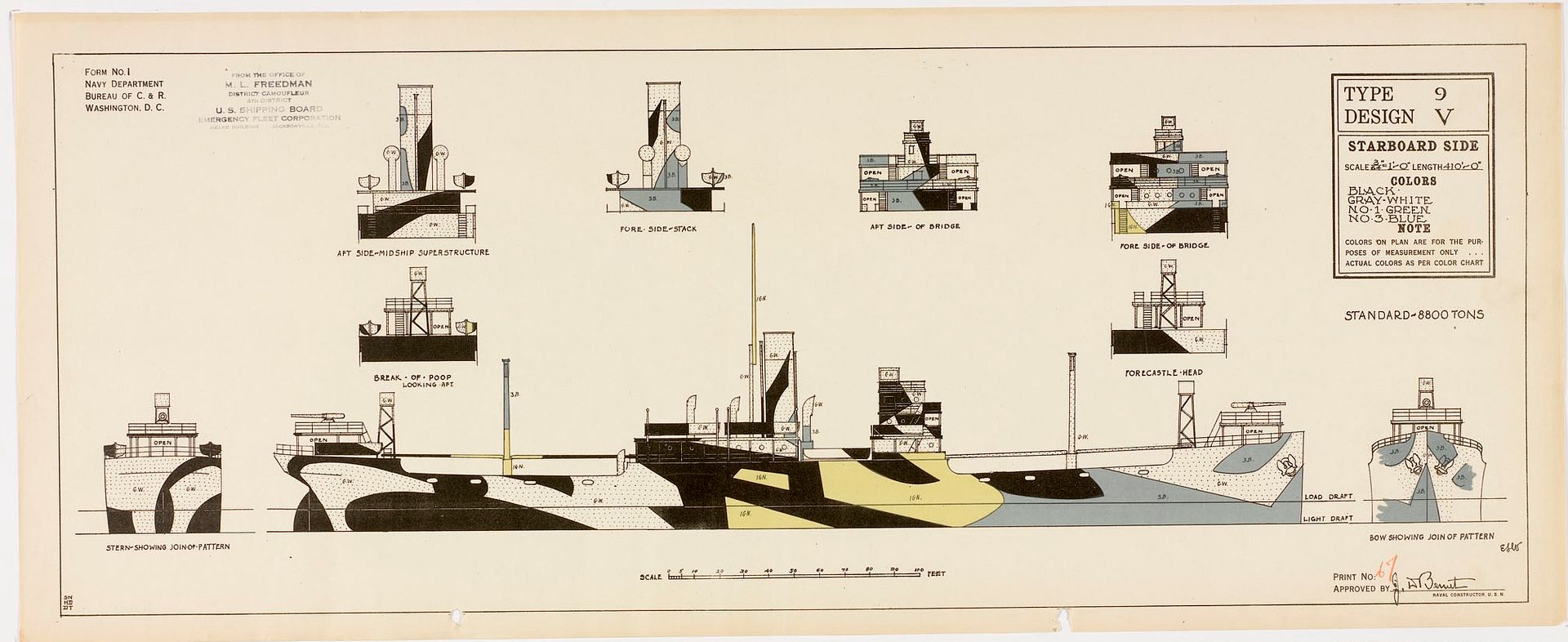
(Erik Gould, courtesy of the Fleet Library at RISD, Providence, RI.)
Becoming invisible with your surroundings is only one type of camouflage. Camofleurs call this high similarity or blending camouflage. But camouflage can also take the opposite approach.
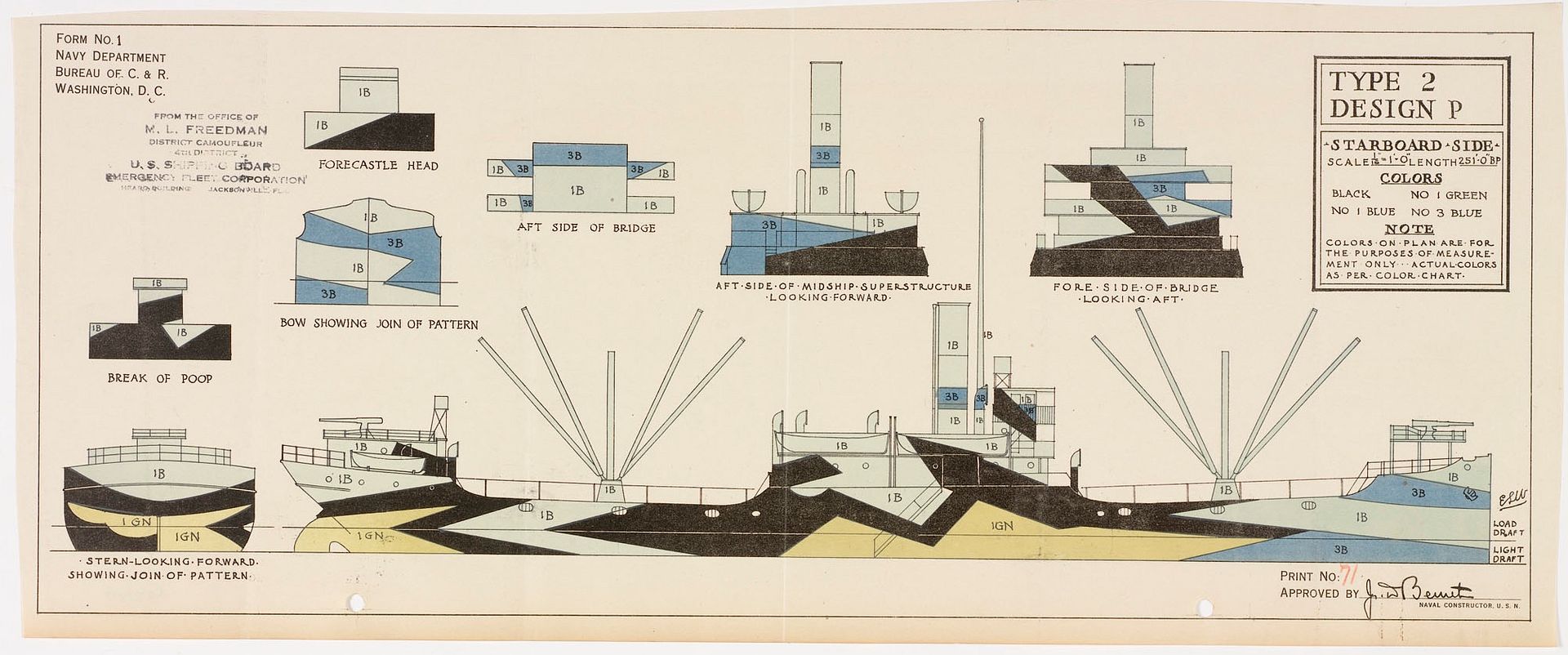
(Erik Gould, courtesy of the Fleet Library at RISD, Providence, RI.)
Think about zebras: it’s hypothesized that their stripes make it difficult for a predator to distinguish one from another when the zebras are in a large herd. The stripes also might make zebras less attractive to blood sucking horseflies. This is called disruptive camouflage.
When it comes to humans, the greatest, most jaw-droppingly spectacular application of disruptive camouflage was called Dazzle.
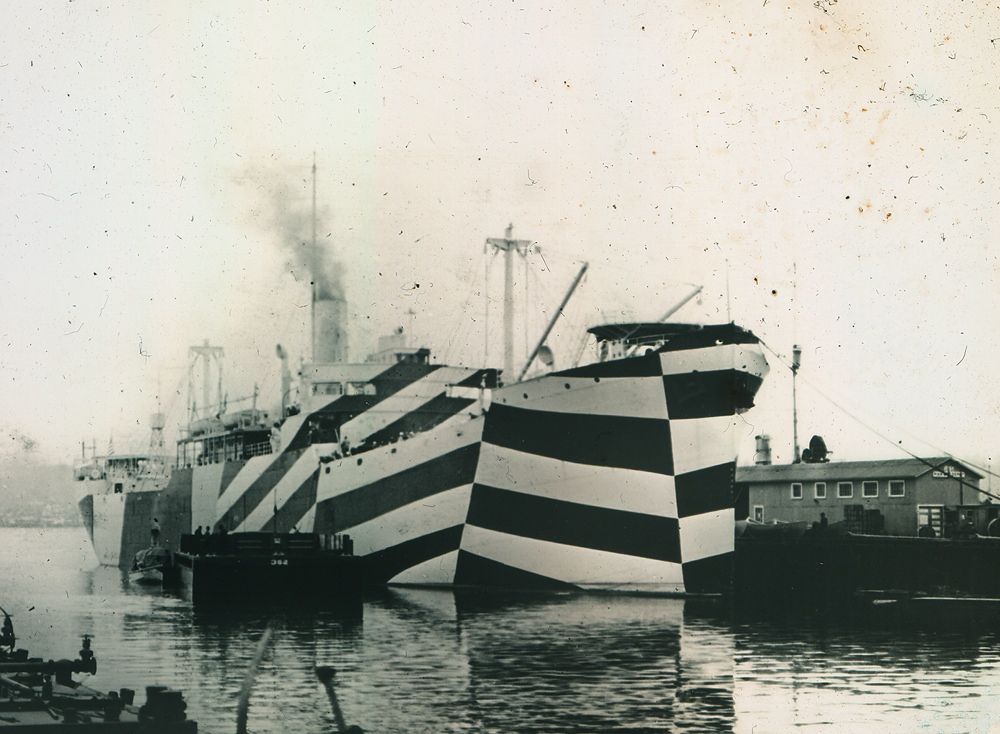
(Anon, photograph of the USS West Mahomet in dazzle camouflage, 1918. Courtesy US Naval Historical and Heritage Command, NH 1733.)
Dazzle painting emerged in the 1910s as design solution to a very dire problem: American and British ships were being sunk left and right by German U-Boats. England needed to import supplies to fight the Central Powers, and these ships were sitting ducks in the Atlantic Ocean. They needed a way to fend of the torpedoes.
Conventional high-similarity camouflage just doesn’t work in the open sea. Conditions like the color of the sky, cloud cover, and wave height change all the time, not to mention the fact that there’s no way to hid all the smoke left by the ships’ smoke stacks.
The strategy of this high-difference, dazzle camouflage was not about invisibility. It was about disruption. Confusion.
Torpedoes in the Great War could only be fired line-of-sight, so instead of firing at where they saw the ship was at that moment, torpedo gunners would have to chart out where the ship would be by the time the torpedo got there. They had to determine the target ship’s speed and direction with just a brief look through the periscope.
The torpedo gunner’s margin of error for hitting a ship was quite low. Dazzle painting could throw off an experienced submariner by as much as 55 degrees.
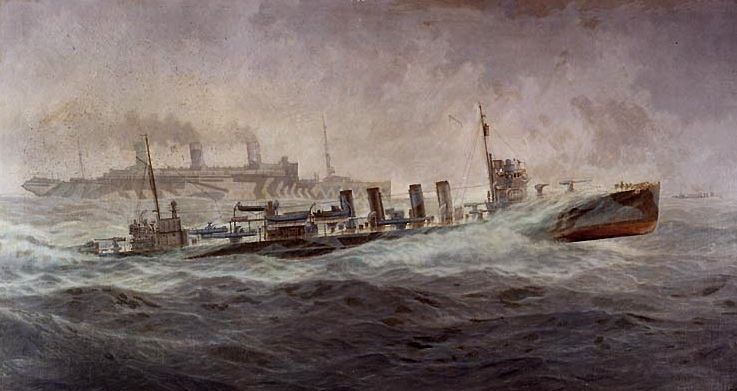
(Burnell Poole, Painting of the USS Leviathan escorted by the USS Allen, 1918. Courtesy US Naval Historical and Heritage Command, NH 42691.
A journalist at the time referred to these dazzling ships as “a flock of sea-going Easter eggs.”
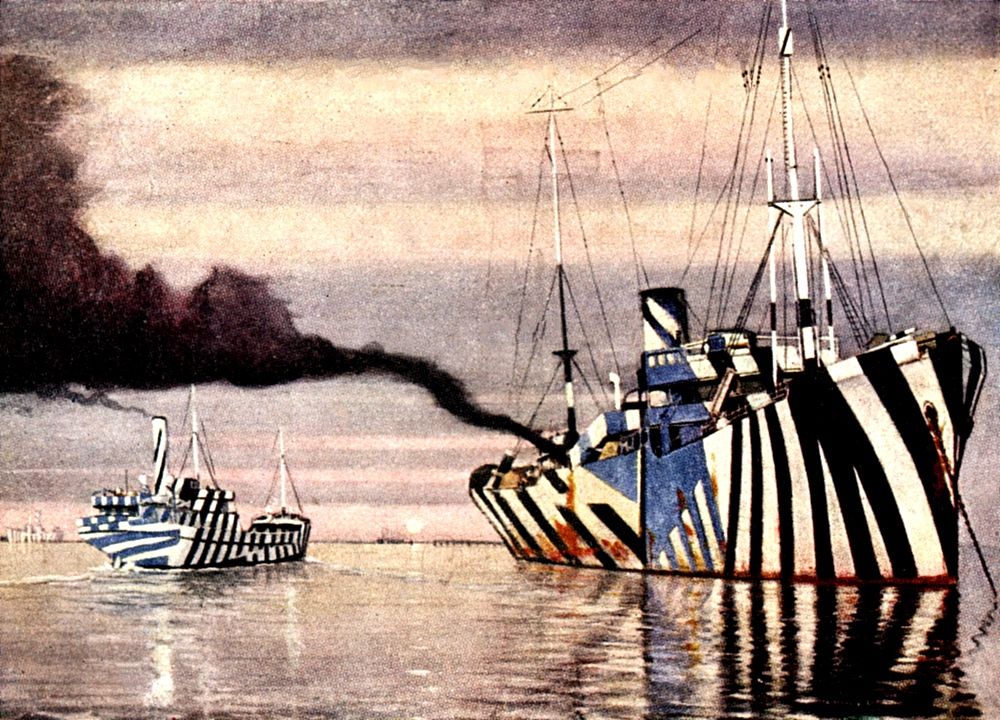
(John Everett, Painting of the SS Lepanto (c1918). Postcard. Collection of Roy R. Behrens.)
An American “Women’s Reserve Camouflage Corps” did some of the painting.
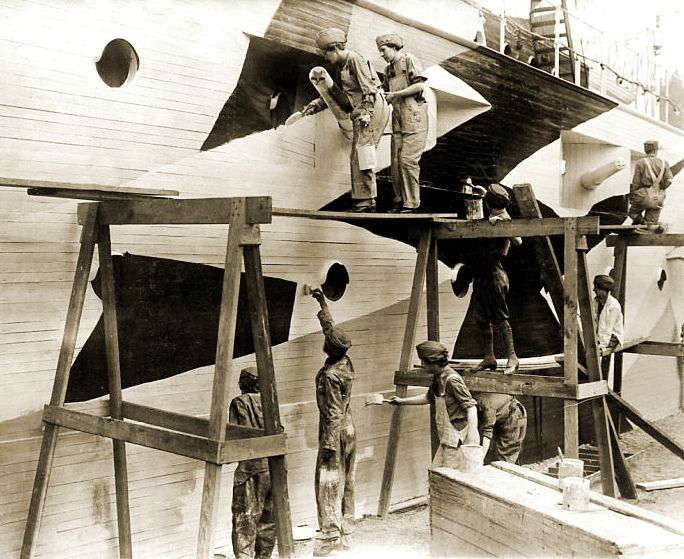
(Anon, government news photograph of members of the US Women’s Reserve Camouflage Corps camouflaging the USSRecruit in Union Square, NYC, 1917.)
1 note
designlens posted this

